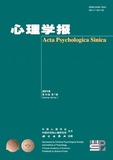Legacy motivation refers to the phenomenon that individuals want to leave a mark on this planet and be remembered by others for a long time. It is a fundamental motivation that has been widely possessed by human beings. It can have important psychological and behavioral consequences because it offers individuals an enduring meaning for self-identity and motivates them to extend themselves into the future. Previous work examined the influences of legacy motivation in the domains of intergenerational decision making and employee behaviors. However, research on how legacy motivation influences individuals' other behaviors remains in infancy. The current work takes a novel perspective and focuses on the influence of legacy motivation in the domain of financial decision making. We examine how and why legacy motivation affects individuals' risk- taking behavior and when it occurs. We propose that legacy motivation would diminish individuals' tendency to engage in risk-taking behavior. This effect is driven by future self-continuity perception and occurs among people with a high socioeconomic status (SES).
Four experiments were conducted to test our proposed hypothesis. Study 1 was designed to offer initial evidence that legacy motivation would lead to a greater perception of future self-continuity. This study employed a one factor (legacy motivation: legacy vs. control) between-subject design and manipulated legacy motivation by asking participants to write an essay on what they wanted to be remembered for by future others. In the control condition, participants were instructed to imagine and write about what life would be in 30 years. Study 2a established the main effect of legacy motivation on individuals' risk-taking tendency. Participants were presented a job recruitment advertisement featuring a high wage but low job security to measure their risk-taking tendency. They indicated their likelihood of adopting this new job. Study 2b replicated the effect of legacy motivation on risk-taking behavior and explored the underlying mechanism of future self-continuity. Risk-taking behavior was operationalized by asking participants to select one of three financial portfolio products that represent different degrees of financial risk. Study 3 investigated the moderation role of individuals' SES. A 2 (legacy motivation: legacy vs. control) × 2 (SES: continuous variable) design was employed, in which legacy motivation was manipulated, and SES was measured.
The propositions were supported by several convergent results. Study 1 provided initial evidence that activating legacy motivation would result in a higher future self-continuity perception (Mlegacy = 4.25, SD = 1.50, Mcontrol = 3.81, SD = 1.44; F(1, 182) = 4.08, p = 0.045, Cohen's d = 0.30). Study 2a documented the main effect by showing that legacy motivation weakened individuals' likelihood of engaging in financial risk taking (Mlegacy = 4.22, SD = 1.84, Mcontrol = 4.66, SD = 1.72; F(1, 259) = 4.09, p = 0.044, Cohen's d = 0.25) and ruled out several alternative interpretations such as self-esteem, mood, and impression management. Study 2b confirmed the mediation role of future self-continuity in driving legacy motivation's effect on financial risk taking (b = 0.12, SE = 0.06, 95% CI = 0.03~0.26). Study 3 investigated the moderating role of participants' SES. We found that the legacy effect on financial risk taking as a function of future self-continuity only existed in participants with a relatively high SES (b = 0.19, SE = 0.08, 95% CI = 0.05~0.37) and disappeared with a relatively low SES (b = 0.03, SE = 0.05, 95% CI = -0.04~0.15).
This study contributes to the literature on legacy motivation, future self-continuity, and financial risk-taking behavior. It extends the research on legacy motivation by documenting an important behavioral consequence in the domain of individual financial decision making. It also provides a new antecedent for future self-continuity and financial risk-taking behavior.




